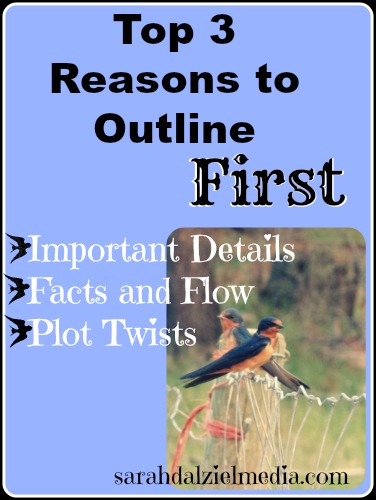I subscribe to the outline camp for most writing projects, whether writing a novel or writing non-fiction. Outlining is the 2nd step in writing a novel, and one of my personal favorites. The only projects I feel comfortable not outlining are short stories, and short non-fiction pieces. Even in university I would outline my papers using quotes, headings, and other outline planning.
As a writer, I love outlining. It’s fast, fun, and a quick way to indulge in some creativity. I can make the outline as detailed as I want, or as bare bones as I want. The outline can include tangents, misleading scenes, and sub plots. Or, it can only be the big picture and leave the little plot threads to be found and investigated while I am writing. It also enables me to draft a story idea, without having to start writing it, and it keeps me from getting distracted from my current project. When I want to work on a new project, I have my outlines to choose from.
1. Importance
You are writing something important. This could be an application letter, a university essay, a novella, or anything else that you know you need to include certain aspects in a certain order. An outline is essential for these types of projects as it makes sure you do not forget an important question, or element in your work.
One trick I learned was to use the paper requirements, in university, to form the paper outline. Which I then roughly populated with relevant quotes, before beginning to write. Not only was the writing fast, but the papers were usually pretty good and looked well-researched.
2. Facts and Flow
You are writing a non-fiction book. Non-fiction may seem easier to write than fiction, but having an outline is even more important in non-fiction than in fiction. It can help you organize your research and shuffle important pieces of information into the book in their ideal place. Outlining can also help you write coherently, and make sure that you do not miss including a keystone piece of information or research in your writing.
3. Plot and Plot Twists
Might be obvious, but if you are writing fiction longer than 30 thousand words you probably need an outline. Plots, sub-plots, plot bunnies, and distraction dragons flourish in the roughly drafted pages of any novel. Having an outline can limit the number of plot holes caused by the wild plot bunnies, and tame the distraction dragons enough to make sure their distractions are benefiting your plot. Writing is fun, and sometimes those distraction dragon ideas can make good short stories, or even better sub-plots.
Back To You:
When do you like outlining? Do you outline when starting a novel or non-fiction book? Do you find it a pain, a chore, or something you’d rather not do? Leave a comment.

Leave a Reply